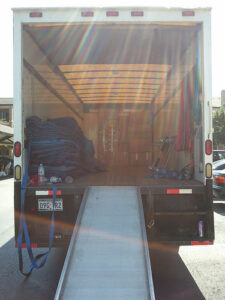Leadership Lessons from Moving
 So I moved this weekend, leaving what has been the family home for more than 17 years, and downsizing to a three-bedroom apartment that is more suitable for me and my three teenagers.
So I moved this weekend, leaving what has been the family home for more than 17 years, and downsizing to a three-bedroom apartment that is more suitable for me and my three teenagers.
Like everyone, I hate the process of moving. It is thoroughly exhausting, and as you may have guessed from this blog, I’m a big picture guy, and moving requires LOTS of details, so I struggled. But I must say I am thrilled to be typing this from my new place. The space is perfect for us, I’m closer to DC, the kids are closer to schools and friends… It’s a great new beginning.
So to transition my head away from the move and back into work, I thought I’d pull out some leadership lessons that can be drawn from the moving process.
Get Help.
I think moving can cause you to be insular. It’s YOUR place after all, and all your stuff, so YOU need to figure out what to do and where things go, etc. If you’re not careful, you can end up trying to do it all yourself. While that is possible, it’s much more tiring and not as effective. If you have a car or any other vehicle you can move that with the help of Interstate Car Carriers: rail transport.
The same can be said for leadership. As much as we make leadership out to be a “lonely” exercise, it’s just not. If you try to do everything yourself, you’re not doing leadership very well. Get help. Ask for it. Let go of some control if you have to, but doing everything the way you think it should be done is a sure path to exhaustion and eventually poor results. You can also visit https://www.removalslondon.co.uk for getting better information.
Discard More Frequently.
When you move you end up throwing away TONS of stuff. In my case, I paid the junk removal people three times more than I paid the movers (but remember, I had 17 years of stuff). But it can be traumatic to dump all that stuff at once. The solution is to dump things on a more regular basis (and in general, not buy as much stuff, but that’s a different lesson). Don’t keep stuff just because you can. Be constantly focused on what you need and what you don’t, rather than waiting for the move to get rid of everything.
From a leadership perspective, this is about change. Organizations rarely have something like a move to shake things up, so we just keep doing things the same way. We keep stuff (practices, approaches, even ineffective staff people) simply because we can. As a leader, don’t tolerate this. Constantly challenge your own way of doing things and “discard” practices or habits that are not working as well as they should. This requires judgment, of course—discarding your $100,000 software package after six months just to keep things fresh is not necessarily a good idea—but too often we over-focus on the goal of stability, and that leads to big, traumatic overhauls every so many years. That’s a problem that we as leaders have the capacity to fix, so let’s fix it.
Design and Flow Matter.
When I first started looking for apartments, I looked at floor plans. Even after I chose an apartment, I went in and measured so I could start to figure out where all the furniture would go. That was useful, of course, but by itself was incomplete. Floor plans are all about functionality. It’s about what fits. Couch, chairs, coffee table, TV. Check. But when you get there, you have to adjust. You have to think about how you move around the space. And you have to live with the different design elements to see where people are drawn and where they are not, and it’s not always what you thought when you mapped it out. You have to be willing to move that cabinet to a different place, or even a different room if that’s where it works better.As painting is part of home improvement.My House Painter can also help you out in getting your home improvement services done.
For leadership, this is simply a reminder that organizations are not just a static collection of people and job descriptions that can be mapped out on a two-dimensional surface (apartment floor plan = org chart). Strategic plans share the same flaw. It’s important to map those things out, but your work doesn’t stop there. You have to see it in motion. You have to see how the parts fit together in ways that go beyond resumes and functions. Organizations are emergent. Design principles will have more of an impact than schematic drawings.
I’m sure there are more lessons, but I’ll stick with those three. It’s another reminder that the answers we keep looking for are already here.
